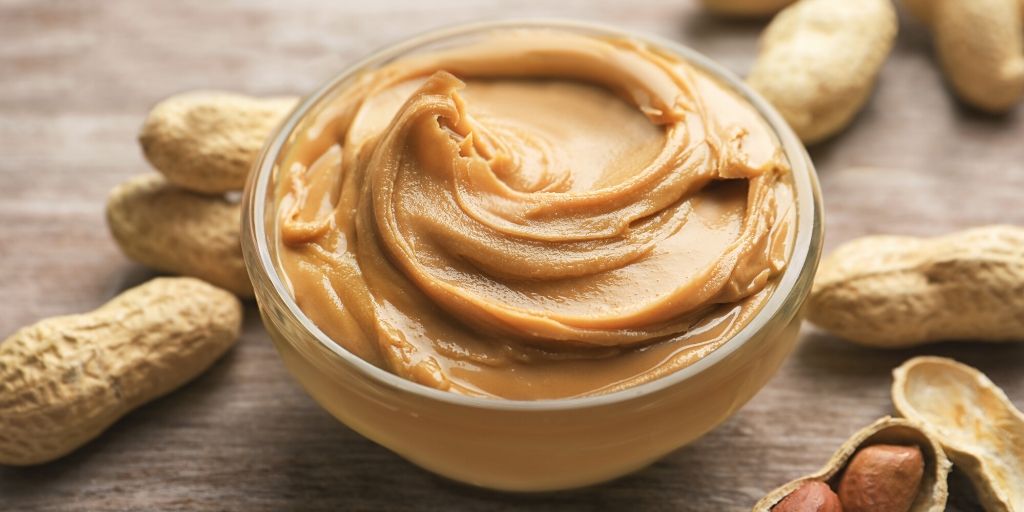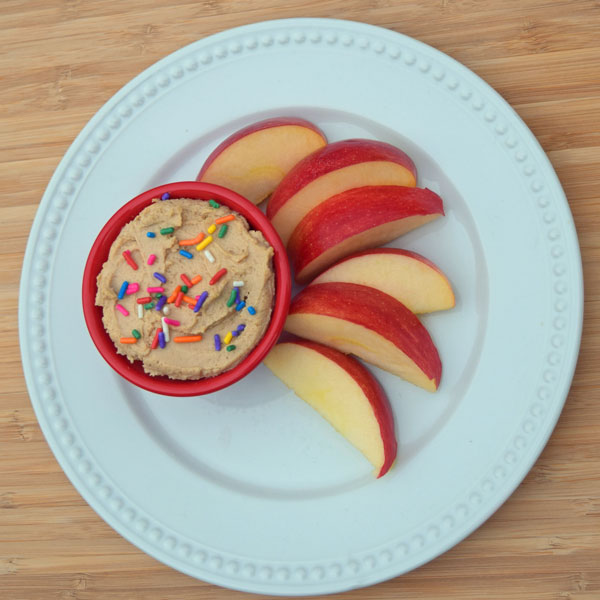
Do your children seem to eat more fruits and vegetables when they can dip them in peanut butter? According to the National Peanut Board, 64% of children surveyed, reported they will eat more fruits and vegetables when their favorite peanut butter dip is available. As long as your child doesn’t have a peanut allergy, peanut butter is a great way to help your children try different foods.
Peanut butter is packed with nutrition and is considered a nutritionally dense “superfood” because it is packed with essential vitamins and minerals. According to the latest USDA nutrition data base an ounce (2 tablespoons) of peanut butter contains 7 grams of protein-more than any other nut. It also contains unsaturated fats, which is the type of fat we should eat more often. It also is a good source of niacin, manganese, vitamin E, magnesium, folate, copper, phosphorus, and fiber.
The Peanut Institute reports that to be called peanut butter, both traditional and “natural” types must contain a minimum of 90% peanuts, with no artificial sweeteners, colors, or preservatives. Commercial peanut butters are blended or homogenized for convenience and for creaminess. Whereas “natural” peanut butters can separate, requiring stirring and are not as smooth in texture.
If you or your children get fidgety or fussy in the afternoon with dinner still hours away try offering a snack that includes peanut butter. Spread it on whole grain crackers or bread, make a dip for fruits and veggies, or a peanut butter-banana tortilla rollup. A nutrient dense snack like one of these will keep you feeling full longer and give you an energy boost to get through the rest of the day.

Peanut Butter Power Dip
Ingredients:
- ½ cup yogurt, non-fat plain
- ½ teaspoon vanilla
- ⅓ cup peanut butter
- Sprinkles (optional)
Directions:
- Wash hands with soap and water.
- Combine yogurt, vanilla and peanut butter in a small bowl. Mix well.
- Chill dip in refrigerator until ready to serve.
- Serve with 1 cup assorted carrot and celery sticks, sliced cucumbers, apples or pear slices.
- Store leftovers in a sealed container in the refrigerator for up to four days.
Nutrition Information:
- Serving Size (1/6 of recipe):
- Calories 96
- Total Fat 7g
- Sodium 84mg
- Total Carbohydrates 5g
- Fiber .8g
Source:
Adapted from Colorado State University and University of California at Davis; available at MyPlate Kitchen
National Peanut Board Peanut Butter Fun Facts:
- It takes about 540 peanuts to make a 12-ounce jar of peanut butter.
- There are enough peanuts in one acre to make 30,000 peanut butter sandwiches.
- Sixty percent of consumers prefer creamy peanut butter over crunchy.
- The average child will eat 1,500 peanut butter and jelly sandwiches before he/she graduates high school.
Sources:
Peanut Butter, United States Department of Agriculture
This newsletter has been peer reviewed.
Tags:
Feedback Form
Feedback Form
If you do not see the article, please scroll up the page.








